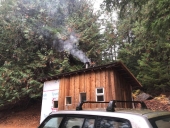








Success has a Thousand Fathers , Failure is an Orphan
LOOK AT THE " SIMILAR THREADS " BELOW !




Due to Oxidation and ''High Temperature Hydrogen Attack'', also called ''Hydrogen Embrittlement'' ALL
metal is doomed within the combustion zone !














Success has a Thousand Fathers , Failure is an Orphan
LOOK AT THE " SIMILAR THREADS " BELOW !




Has anyone done any experiments to find the relationship between pipe diameter and combustion? First stage of my build is set to do this experiment with observable pipes of different diameters but I was wondering if there's anybody else who's on it?










Success has a Thousand Fathers , Failure is an Orphan
LOOK AT THE " SIMILAR THREADS " BELOW !














Success has a Thousand Fathers , Failure is an Orphan
LOOK AT THE " SIMILAR THREADS " BELOW !








 1
1




Glenn Herbert wrote:
Your plans for a glowing coal bed overnight are precisely the polluting effect found from ordinary woodstoves used in the ordinary way.









Where there is Liberty, there is Christ!









Where there is Liberty, there is Christ!














Where there is Liberty, there is Christ!






|
Alas, poor Yorick, he knew this tiny ad:
Learn Permaculture through a little hard work
https://wheaton-labs.com/bootcamp
|






